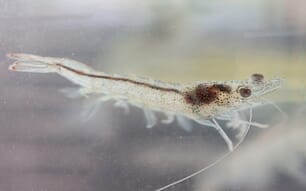Agricultural Research Service (ARS) chemists Laura McConnell and Cathleen Hapeman obtained weekly air samples and rain samples for precipitation events from 2000 to 2003 at three sites in Maryland and Delaware. Both scientists work at the ARS Environmental Management and Byproduct Utilisation Laboratory in Beltsville, Md. ARS is USDA's chief intramural scientific research agency.
The samples were tested for several types of legacy pesticides, including chlordane and related chemical products such as heptachlor and breakdown products of chlordane; lindane; aldrin and dieldrin; DDT and its degradation products (DDD and DDE); and mirex. Nearly all the air samples contained lindane and chlordane products, and pesticides measured at the highest mean concentrations were dieldrin and DDE.
The scientists found that some of the legacy pesticides detected in the samplesincluding chlordane compounds, lindane, DDE, and dieldrincame from local and regional sources, possibly from contaminated soils. When disturbed, the generally sandy soils on the Delmarva Peninsula are more likely to release pesticides than soils that contain higher levels of organic carbon. But the researchers also concluded that most of the lindane, heptachlor, and many of the chlordanes detected in the air samples came from sources more than 60 miles away.
Modeling results indicated that the variability in air temperature and wind conditions only accounted for 30 to 60 per cent of the variability in compound levels. And there was some good news: With the exception of dieldrin, the half-life values measured for the pesticides in the samples indicated that legacy pesticide levels were decreasing over time in the Delmarva.
Results from this study, which support the USDA priority of promoting sustainable agriculture, were published in Science of the Total Environment and Environmental Toxicology and Chemistry.
Read more about this work in the July 2011 issue of Agricultural Research magazine.
Chesapeake Bay Pesticides Study
US - Scientists with the US Department of Agriculture (USDA) are identifying factors that influence pesticide levels in the Chesapeake Bay airshed, including traces of "legacy" pesticides that still linger even though they are no longer being used.




